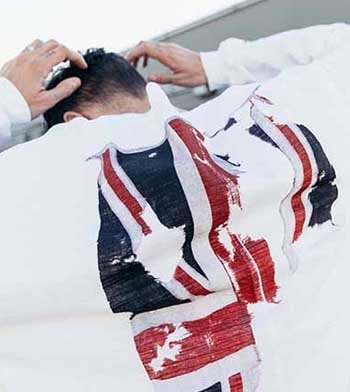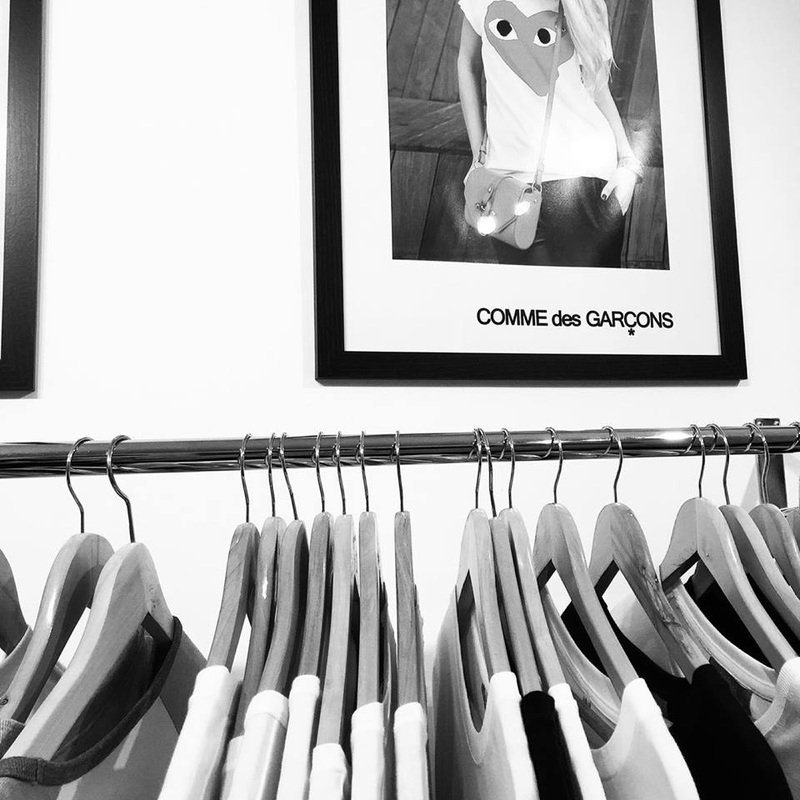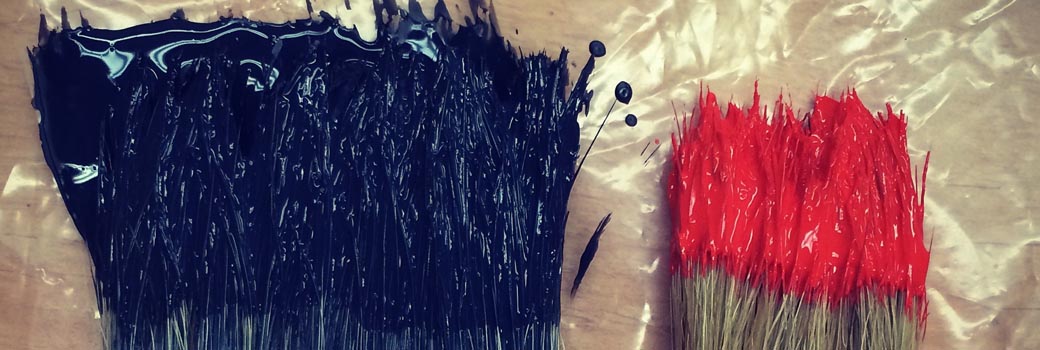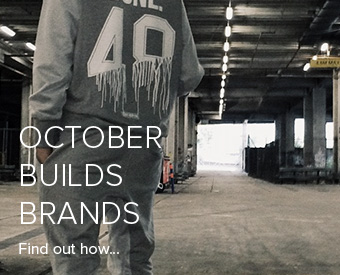Ink is ink is ink…you think…?
So you have that special sense of who you are, your brand, your identity; you know who your customers are, where they live, and the colour of the curtains in their back bedroom; you know how to reach them in as many ways as possible, website, Facebook, Twitter, dancing girls bursting out of a cake on their front door step; and you’ve chosen your T-shirt, your vehicle, the bill board to express all that you hold most dear (and don’t worry about sweats, hoods, polos, vests, revolving bow ties and velvet ‘Y’ Fronts, we’ll come to them in a later edition). So all you need to do now is slap on some ink, and Bob’s that funny Uncle you never quite felt safe with, you’re away!
Sadly not…to say that ink is ink, is to say that all clouds are the same shape, and that you understand women…they’re not, you don’t, and I must make an ink stained confession here…neither do I.
When the phone rings and you get through to Perky Pete’s Print Palace, you are unsurprisingly talking to a Printer, not a Sub Atomic Particle Chemist who knows the molecular make up of the colourful fluids he plays with. If you wanted to trace the constituent parts of all ink, you would be led on a mysterious Da Vinci Code trip, through thousands of ingredient suppliers back to a petrochemical hole in the ground, five miles from Tel Aviv Bus Station, next to the Falafel Shack. Assuming the ink manufacturers wanted you to know of course, which they don’t, as they build their pencil cases up on their desk to carefully guard their ingredients, their commercial edge over the competition.
Disclaimer over, and if you’re watching Grandma, spark up a fag and smile down from your celestial sofa, I told the truth…but fear not, I do have some knowledge to impart, in part, and impartial…let’s go through the menu.
Plastisol Inks…sometimes called Solvent Based inks — these are the most commonly used — because they’re the nicest? No, because they’re the easiest for us printers to use. They don’t really have a shelf life, any small imperfections on the garment can be removed, and most importantly (and unlike water based inks), they don’t block the design in the screen if you don’t print at warp factor 5. This means your trusty printer can stop half way through a job, pick up his copy of Big and Bouncy, and head off for a nice relaxing thirty minute dump. With that in mind and if you don’t specify, this is what you’re going to get from most print shops unless you ask for something different…so what are its pros and cons?
In its favour, it will give you the brightest colours, the sharpest most graphic line, and the greatest longevity…done right, it will outlast the T. This is largely because it sits on top of the fabric, so it can block out the garment colour behind (stay bright), not have its edges affected by the weave of the fabric (stay sharp), and not allow the fibres of the shirt to come through (and so not degrade with the fabric, after a scrap in the bogs and fifty washes). Properly printed with some plasticising agent (magic stretchy mixture), it will stay pretty much as bright and lovely as the day it was born.
You could say this is a good thing, and it is in certain markets…if you think your customer is fairly mainstream, and could complain if his ink ‘vintages ‘with time…we say ‘vintages’ not ‘fades’ because it sounds better, then this is the one for you – the safe, and sleep like you’re a Peer on expenses in the House of Lords option.
But, and as always, there’s a bloody ‘but’… you’re going to get texture. Now for the New Era 5950 flat peaked drive by doooodes that’s not a problem, they like it heavy, it might stop them getting a cap in their cap, but for the fashionistas, there are few greater blaspheming crimes than texture…they want it nice and soft and fluffy, to gently caress their newly waxed nipples.
So, if you wear your jeans around your ankles with a naval deep V-neck T shirt, what the hell are you going to do? You’re going to ask for…
Water based inks onto light garments, Discharge inks onto darks. What’s the difference? Standard water based inks don’t need the addition of any special dust when going onto white fabric, because they’re not fighting with any background colour…you want a nice red onto white, calm down, you can have one, it’ll look like it just came out the cauldron, but, try and print the same red onto a black T-shirt, it’ll soak in like English rain on Centre Court, and the match will be off. So, you whack in some discharge crystals, and like it says on the tin, the dye of the garment will be ‘discharged’ and replaced with whatever pigment colour we’ve mixed in…nice colour, no texture, happy days on the Sunshine Bus…
But, and as always, there’s a bloody ‘but’ …because your ink has penetrated the fabric, it may lose a little graphic sharpness in your design, it may have some garment colour in there so not quite so bright, and when the fabric is washed and all the fibres stand up and come through the ink, it will ‘vintage’ more quickly…and what’s this I hear about Discharge inks and ‘Colour Shift’…that sounds a bit like Physics; will I end up living in a parallel universe, will my nuts shrink? Ssshhh, ssssshh, now then, now then, then now… it’s ok, but if your garments are from two different dye batches your pinky red could go a touch orangey red half way through the print run, while still using the same discharge ink.
Confused? You might be if we start talking about which inks are kinder to squirrels and don’t kill fish, in the next instalment perhaps…so let’s make it real…we’re down the pub, you’ve ordered a pint of Old Bishop’s Ball Bag (or lager if you haven’t grown up yet), I’m passing you the pork scratchings and you say ‘Paul, I’m lost, I’m empty and aching and I don’t know why’…we’ll come onto that after pint six, but in the meantime what ink do you want!? Are you more All Saints, or more Stussy/Bathing Ape…more English high street or more down with the kids in America? More fashion, or more street wear? If you’re the former, go water based, soft and lovely yaah, if you’re the latter, go solvent, and a bit brighter and sharper, innit, blud, etc.
Or, and you’re going to hate me any minute, more than Traffic Wardens, and those people who know it’s your turn at the bar but still shout their order in first, or those people who don’t pick up their dog shit, and chuck their happy meal bag out of the car window, and say ‘less’ instead of ‘fewer’ and don’t say thank you when you let them into traffic and Christ, hold on, breathe…I’m ok …because you can…mix the two inks….you could have a nice soft water based background texture, with a hard little solvent based ink detail on top to add a point of textural contradiction. How does that twist your melons?
And you might confuse it further, and thirsty after all those scratchings and while ordering a Cré¨me de Menthe say ‘what’s this I’ve heard about high build, gloss, foil, glitter, metallic and phosphorescent ink?’
In the same way I would soothe your fevered brow on the water based/solvent based dilemma by saying are you fashion or street, I would try and ease your special ink effect pain by saying ‘What’s the point’? Unless you’ve got a good reason, like I want a foil here next to this water based ink because the design is about the contradiction of the natural world and materialism, (sounds head up my jacksy but why not) don’t go adding effect for effects sake if it achieves nothing. I expect that from high street multiples who have no graphic heart, and use a load of glitter as a sparkly distraction from their lack of ideas.
One final word – and you can believe this, or call me a sandal wearing bearded tool as you see fit…a good graphic should speak to a good printer, and tell them what ink it needs. As a textile screen printer, one might look at a crisp text based design onto a heavy sweatshirt, and amongst the other songs in one’s head like the theme tunes from Mash, The Persuaders and The Magic Roundabout, they will hear a small voice saying ‘I am solvent based’…or if it’s a gnarly distressed vintage looking image, ‘Hello…I am water based’…mad? Well, we do work with chemicals…






 Artwork Origination
Artwork Origination  Cap Manufacture
Cap Manufacture  Design Consultancy
Design Consultancy  Digital Printing
Digital Printing  Embroidery
Embroidery  Fashion Photography
Fashion Photography  Garment Bagging
Garment Bagging  Garment Manufacture
Garment Manufacture  Garment Sourcing
Garment Sourcing  Relabelling and garment finishing
Relabelling and garment finishing  Screen Printing
Screen Printing  Watch us screen print
Watch us screen print 





